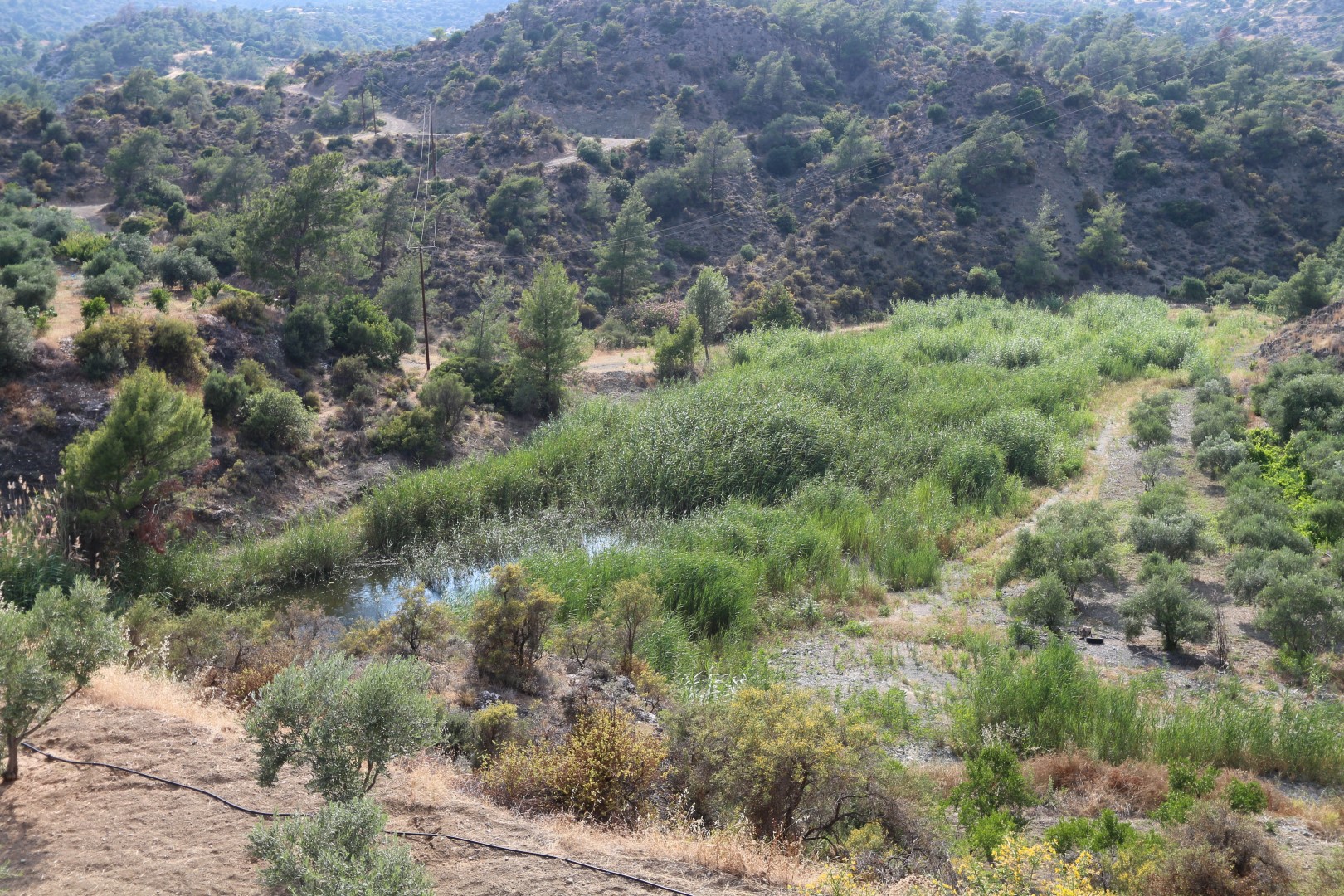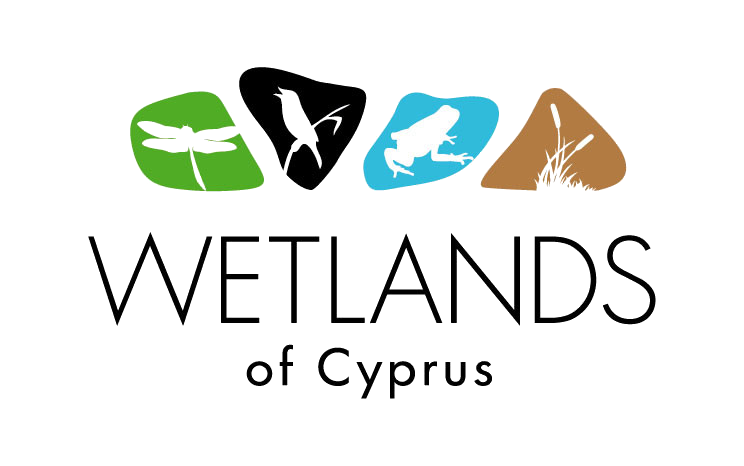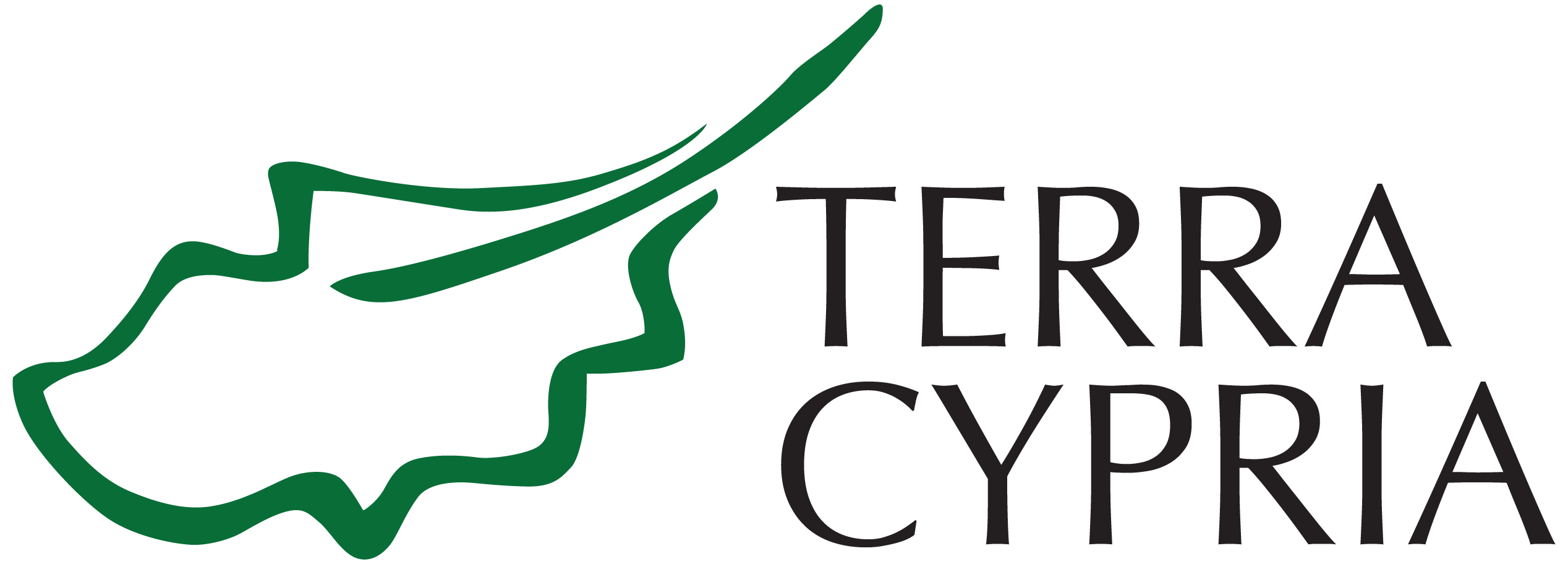CY000LIM081 - AKROUNTA RECHARGE WEIR (AKROUNTA RESERVOIR)
Description
The term Recharge Weir (RW) describes small weirs constructed in rivers to achieve periodic retention of the flowing water for aquifer recharge purposes of and / or to reduce flooding. This is often done with stone gabions that are placed perpendicularly to the flow of the river. The RW of Akrounta LIM081 or Arkounta Reservoir is located in the river bed of Akrounta or Argaki tou Monasteriou as it is known. It is found within the administrative area of the Akrounta community 0.89km northwest from the community centre. It is located a few kilometers upstream of the Germasogeia reservoir (LIM025). Hydrologically it is also related with the Irrigation Reservoir of Arakapa No.1 (LIM016). It was constructed in 1947 in order to provide permanent irrigation to the fields of the community with central water transfer grooves. The project was executed by the Irrigation Department of Akrounta (founded in 1945) with a contribution of the colonial Government. In order to implement the project, the Irrigation Department of Akrounta had to borrow £ 1500 with a repayment period of 15 years, 3% interest rate and annual instalment of 61 pounds, 16 shillings and 6 piastres. For its repayment a tax was imposed to beneficial landowners according to the extent of their land. (1) It has an extent (area) of 1399,2628 m2 .m2 and a capacity of 23000 m3. The water is used for the irrigation of an area of 53 hectares (2). The RW is fed by the flow of the river, which drains to a catchment area of 25,5 km2 (3). The presence of the water in the RW is permanent. The wetland vegetation includes shrubby and arborescent species such as Nerium oleander, Pinus brutia, Rubus sanctus, Tamarix sp., the reeds Arundo donax, Phragmites australis, herbaceous with Polypogon maritimus, and is an alien species the Acacia sp. The fauna, the wetland includes the crab Potamon potamios, various species of dragonfly, Gambusia affinis fish, a type of frog the Pelophylax bedriagae, and three species of birds Columba palumbus, Falco tinnunculus, Alectoris chukar. There have also been reports of periodic presence of the Eurasian Coot (Fulica atra), Garganey(Anas querquedula), mallards (Anas platyrhynchos), the kingfisher (Alcedo atthis). There was also a reference for the counting of at least 85 Black-crowned night heron(Nycticorax nycticorax) in June 2014. The presence of an eel is also reported (Anguilla anguilla) in the past (1). Relevant information is posted in the "Archive" of wetlands and on the website of the Cultural Group of Akrounta. The RW falls into a Temporary Restricted Area of Hunting (4) Is also located within the immediate area Reservoir Potable Water Protection of Germasogeia reservoir ( LIM025 ) (5 ) . The biological value of the wetland is considered to be low. One problem that the RW is facing is the blockage caused by precipitation of 20 years after its construction. Since then, the capacity for the retention of amounts of water has been reduced significantly. Reporting period of Raw Data: 04/06/2015 Field Surveyor: A. Papatheodoulou (1) Louroutziatis P. (2015). Presentation "The wetlands of Akrountas". Cultural Club of Akrounta 15 May 2015. (2) Christofides N., Kyrou K., Pisti E., Ioannou A., Avgoustis M., Chatzigianni N. (2009). Dams of Cyprus. Water Development Department, Ministry of Agriculture, Natural Resources and Environment (3) Evangelidou S. (2011). Dams of Cyprus and their environment. Energy, Environment and Water Research Center (EEWRC). The Cyprus Institute. How to cite Wetlands of Cyprus: Papatheodoulou A., Sergides L., Michael K, Emirzade T., Victoria M., Anastasi A. 2015- (continuously updated): Wetlands of Cyprus – Inventory of the wetlands of Cyprus. Published at http://www.cypruswetlands.org.accessed [date]

Wetland data
Basic information
| Wetland location: | Inland |
| Wetland type: | Artificial |
| Wetland area: | 0.13990 Ha |
| Hydrological interaction: | Yes |
| Water salinity: | Fresh |
| Type of fresh water input: | Torrent / Stream |
| Surface water runoff | Outflow controlled by spillway |
| Open water area (%): | 5 - 25 |
| Hydroperiod: | Permanent |
Geographic information
| District: | LIMASSOL |
| Municipality/Community: | AKROUNTA |
| Longitude: | 33.075300 East |
| Latitude: | 34.770900 North |
Biological significance
| Biological significance: | Low |
Ramsar wetland type
| Type | Coverage (%) |
| 2 -- Ponds; includes farm ponds, stock ponds, small tanks; (generally below 8 ha) | > 95 |
| Protection status category | Protection status subcategory | Area's name | Code | Coverage area (%) | Legislation |
| Aquatic Protection | Close Protection Zone for Drinking Water Supply Re | 100 | |||
| Game Reserve Area | Temporary | 100 | |||
| Planning Regime | Other | Z3 | 94 | ||
| Planning Regime | Other | Z1 | 6 |
Ecosystem services
| Type of ecosystem service | Ecosystem service | Scale of Βenefit (%) | Importance |
| Regulatory services | Flood hazard regulation | ||
| Supporting services | Provision of habitat | ||
| Regulatory services | Water regulation |
Activities on wetland
| Activity | Intensity |
| 421 = disposal of household waste | Low |
| 530 = Improved access to site | Low |
| 800 = Landfill land reclamation and drying out general | Low |
| 910 = Silting up | High |
| 952 = eutrophication | Low |
Activities on catchment area
| Activity | Intensity |
| 100 = Cultivation | Low |
| 107 = tree crops | Medium |
| 430 = Agricultural structures | Low |
| 530 = Improved access to site | Low |
Impacts
| Impact | Intensity |
| LA- = Decrease in transport capability | Low |
| LR- = Decrease in flow regulation | Low |
| SS- = Soil siltation | Low |
Habitat types
| Type | Coverage (%) |
| CY17 Water-fringing beds of tall canes and medium tall grass beds | 51 - 75 |
Vegetation types
| Type | Coverage (%) |
| Alien Species | < 5 |
| Shrubby / Arborescent | < 5 |
| Emergent | 76 - 95 |
Flora
| Species | Presence status | References |
| Acacia sp. | Present | A. Papatheodoulou, 04/06/2015 |
| Arundo donax | Dominant | A. Papatheodoulou, 04/06/2015 |
| Nerium oleander | Present | A. Papatheodoulou, 04/06/2015 |
| Phragmites australis | Present | A. Papatheodoulou, 04/06/2015 |
| Pinus brutia | Present | A. Papatheodoulou, 04/06/2015 |
| Polypogon maritimus | Present | A. Papatheodoulou, 04/06/2015 |
| Rubus sanctus | Present | A. Papatheodoulou, 04/06/2015 |
| Tamarix sp. | Present | A. Papatheodoulou, 04/06/2015 |
Fauna
Amphibians |
Presence status in wetland |
References |
|
| Pelophylax bedriagae (Pallas 1771) | Common | A. Papatheodoulou, 04/06/2015 | |
Fishes |
Presence status in wetland |
References |
|
| Gambusia affinis (S. F. Baird & Girard, 1853) | |||
Invertebrates |
Presence status in wetland |
References |
|
| Common | A. Papatheodoulou, 04/06/2015 | ||
| Potamon potamios (Olivier, 1804) | A. Papatheodoulou, 04/06/2015 |
Evangelidou S. (2011). Dams of Cyprus and their environment. Energy, Environment and Water Research Center (EEWRC). The Cyprus Institute.
Water Development Deapartment Data (Accessed 07/2015)
Λουρουτζιάτης Π. (2015). Παρουσίαση «Οι υγροβιότοποι της Ακρούντας». Πολιτιστικός Όμιλος Ακρούντας 15 Μαϊου 2015.
Game and Fauna Service Data (Accessed 06/2015)
Christofides N., Kyrou K., Pisti E., Ioannou E., Augousti M., Hatzigiannis N. (2009). Dams of Cyprus. Water Development Department, Ministry of Agriculture Natural Resources and Environment

